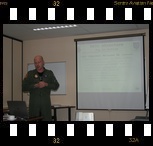
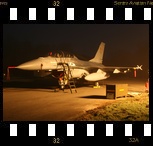
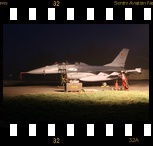
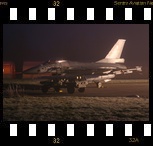
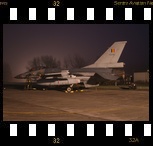
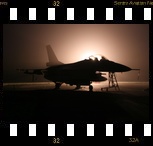
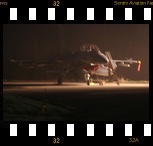
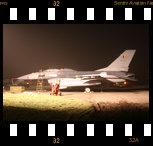
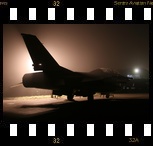


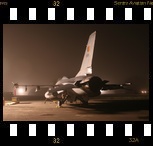


Deployed Falcon at BeauvechainAuditIn 2006 the Belgium Air Component passed the first audit for the NATO Response Force (NRF). After 3 years a re-audit was needed by the NATO. The re-audit consists of 3 preparation exercises and an evaluation at the Beauvechain airbase. The first preparation exercise (Deployed Falcon 1) took place in December 2008, the second preparation (Deployed Falcon 2) took place in January 2009 and the 3rd exercise will take place in March 2009. During the 3rd exercise, there will be an internal audit by auditors of the Belgium Air Component. In May 2009 the ‘real audit’ will take place with 150 independent NATO auditors. The audit will consist of 3 main topics: operations, logistics and protection. Most important are the flight operations, is the Belgium Air Component capable to deploy a number of F-16s (the exact number of aircraft is classified) from a remote airbase? But besides the operations it must also be possible to maintain these operations for a longer time (this duration is classified), so the logistics of the exercise will be audited. 3rd item for the audit is the force protection, will the deployed force be able to protect itself against threads like air attacks and ground attacks (e.g. snipers). During the 2009 NRF evaluation, the Deployed Falcon exercises are organized by the nearby Florennes airbase. The Beauvechain airbase was chosen because it is not operating F-16s anymore; it is only used by training aircraft of the Belgium Air Component. Therefore all logistics involved in the deployment had to be transferred to the base. The aircraft, the armament, the spare parts, the personnel, the tents, the kitchens; everything needed for a long time deployment abroad. NRF
Its characteristics
Its missions:
After passing the audit, the Belgium F-16s aims to become a full compliant part of NRF 13 during the second half of 2009. While the Dutch Air Force has dedicated 1 squadron (323 squadron at Leeuwarden) to the NRF, the Belgium Air Component has a combined F-16 force assigned to NRF. This F-16 force consist of F-16’s from both Florennes airbase and Kleine-Brogel airbase. Training
On Tuesday January 27th, 2009, a Media Day was organized by the Belgium Air Component. LtCol (Pilot) Pascal July (callsign ‘SCALLE’) of the Belgium “Directorate of Plans, Analyses and Evaluations” briefed the media representatives. Due to heavy, freezing fog, no air operations took place that day, the colorstate remained RED the whole day. After nightfall, some ‘artistic’ photos could be made of F-16’s lit by huge lights. Acknowledgments: LtCol (Pilot) Pascal July (‘SCALLE’), Adj-Chief DeWael and Adj Tamigniaux.
All photo's:
|
            |
 Back to top of page
Back to top of page